6.5: Stay Above the Influence
- Page ID
- 2409
\( \newcommand{\vecs}[1]{\overset { \scriptstyle \rightharpoonup} {\mathbf{#1}} } \)
\( \newcommand{\vecd}[1]{\overset{-\!-\!\rightharpoonup}{\vphantom{a}\smash {#1}}} \)
\( \newcommand{\id}{\mathrm{id}}\) \( \newcommand{\Span}{\mathrm{span}}\)
( \newcommand{\kernel}{\mathrm{null}\,}\) \( \newcommand{\range}{\mathrm{range}\,}\)
\( \newcommand{\RealPart}{\mathrm{Re}}\) \( \newcommand{\ImaginaryPart}{\mathrm{Im}}\)
\( \newcommand{\Argument}{\mathrm{Arg}}\) \( \newcommand{\norm}[1]{\| #1 \|}\)
\( \newcommand{\inner}[2]{\langle #1, #2 \rangle}\)
\( \newcommand{\Span}{\mathrm{span}}\)
\( \newcommand{\id}{\mathrm{id}}\)
\( \newcommand{\Span}{\mathrm{span}}\)
\( \newcommand{\kernel}{\mathrm{null}\,}\)
\( \newcommand{\range}{\mathrm{range}\,}\)
\( \newcommand{\RealPart}{\mathrm{Re}}\)
\( \newcommand{\ImaginaryPart}{\mathrm{Im}}\)
\( \newcommand{\Argument}{\mathrm{Arg}}\)
\( \newcommand{\norm}[1]{\| #1 \|}\)
\( \newcommand{\inner}[2]{\langle #1, #2 \rangle}\)
\( \newcommand{\Span}{\mathrm{span}}\) \( \newcommand{\AA}{\unicode[.8,0]{x212B}}\)
\( \newcommand{\vectorA}[1]{\vec{#1}} % arrow\)
\( \newcommand{\vectorAt}[1]{\vec{\text{#1}}} % arrow\)
\( \newcommand{\vectorB}[1]{\overset { \scriptstyle \rightharpoonup} {\mathbf{#1}} } \)
\( \newcommand{\vectorC}[1]{\textbf{#1}} \)
\( \newcommand{\vectorD}[1]{\overrightarrow{#1}} \)
\( \newcommand{\vectorDt}[1]{\overrightarrow{\text{#1}}} \)
\( \newcommand{\vectE}[1]{\overset{-\!-\!\rightharpoonup}{\vphantom{a}\smash{\mathbf {#1}}}} \)
\( \newcommand{\vecs}[1]{\overset { \scriptstyle \rightharpoonup} {\mathbf{#1}} } \)
\( \newcommand{\vecd}[1]{\overset{-\!-\!\rightharpoonup}{\vphantom{a}\smash {#1}}} \)
\(\newcommand{\avec}{\mathbf a}\) \(\newcommand{\bvec}{\mathbf b}\) \(\newcommand{\cvec}{\mathbf c}\) \(\newcommand{\dvec}{\mathbf d}\) \(\newcommand{\dtil}{\widetilde{\mathbf d}}\) \(\newcommand{\evec}{\mathbf e}\) \(\newcommand{\fvec}{\mathbf f}\) \(\newcommand{\nvec}{\mathbf n}\) \(\newcommand{\pvec}{\mathbf p}\) \(\newcommand{\qvec}{\mathbf q}\) \(\newcommand{\svec}{\mathbf s}\) \(\newcommand{\tvec}{\mathbf t}\) \(\newcommand{\uvec}{\mathbf u}\) \(\newcommand{\vvec}{\mathbf v}\) \(\newcommand{\wvec}{\mathbf w}\) \(\newcommand{\xvec}{\mathbf x}\) \(\newcommand{\yvec}{\mathbf y}\) \(\newcommand{\zvec}{\mathbf z}\) \(\newcommand{\rvec}{\mathbf r}\) \(\newcommand{\mvec}{\mathbf m}\) \(\newcommand{\zerovec}{\mathbf 0}\) \(\newcommand{\onevec}{\mathbf 1}\) \(\newcommand{\real}{\mathbb R}\) \(\newcommand{\twovec}[2]{\left[\begin{array}{r}#1 \\ #2 \end{array}\right]}\) \(\newcommand{\ctwovec}[2]{\left[\begin{array}{c}#1 \\ #2 \end{array}\right]}\) \(\newcommand{\threevec}[3]{\left[\begin{array}{r}#1 \\ #2 \\ #3 \end{array}\right]}\) \(\newcommand{\cthreevec}[3]{\left[\begin{array}{c}#1 \\ #2 \\ #3 \end{array}\right]}\) \(\newcommand{\fourvec}[4]{\left[\begin{array}{r}#1 \\ #2 \\ #3 \\ #4 \end{array}\right]}\) \(\newcommand{\cfourvec}[4]{\left[\begin{array}{c}#1 \\ #2 \\ #3 \\ #4 \end{array}\right]}\) \(\newcommand{\fivevec}[5]{\left[\begin{array}{r}#1 \\ #2 \\ #3 \\ #4 \\ #5 \\ \end{array}\right]}\) \(\newcommand{\cfivevec}[5]{\left[\begin{array}{c}#1 \\ #2 \\ #3 \\ #4 \\ #5 \\ \end{array}\right]}\) \(\newcommand{\mattwo}[4]{\left[\begin{array}{rr}#1 \amp #2 \\ #3 \amp #4 \\ \end{array}\right]}\) \(\newcommand{\laspan}[1]{\text{Span}\{#1\}}\) \(\newcommand{\bcal}{\cal B}\) \(\newcommand{\ccal}{\cal C}\) \(\newcommand{\scal}{\cal S}\) \(\newcommand{\wcal}{\cal W}\) \(\newcommand{\ecal}{\cal E}\) \(\newcommand{\coords}[2]{\left\{#1\right\}_{#2}}\) \(\newcommand{\gray}[1]{\color{gray}{#1}}\) \(\newcommand{\lgray}[1]{\color{lightgray}{#1}}\) \(\newcommand{\rank}{\operatorname{rank}}\) \(\newcommand{\row}{\text{Row}}\) \(\newcommand{\col}{\text{Col}}\) \(\renewcommand{\row}{\text{Row}}\) \(\newcommand{\nul}{\text{Nul}}\) \(\newcommand{\var}{\text{Var}}\) \(\newcommand{\corr}{\text{corr}}\) \(\newcommand{\len}[1]{\left|#1\right|}\) \(\newcommand{\bbar}{\overline{\bvec}}\) \(\newcommand{\bhat}{\widehat{\bvec}}\) \(\newcommand{\bperp}{\bvec^\perp}\) \(\newcommand{\xhat}{\widehat{\xvec}}\) \(\newcommand{\vhat}{\widehat{\vvec}}\) \(\newcommand{\uhat}{\widehat{\uvec}}\) \(\newcommand{\what}{\widehat{\wvec}}\) \(\newcommand{\Sighat}{\widehat{\Sigma}}\) \(\newcommand{\lt}{<}\) \(\newcommand{\gt}{>}\) \(\newcommand{\amp}{&}\) \(\definecolor{fillinmathshade}{gray}{0.9}\)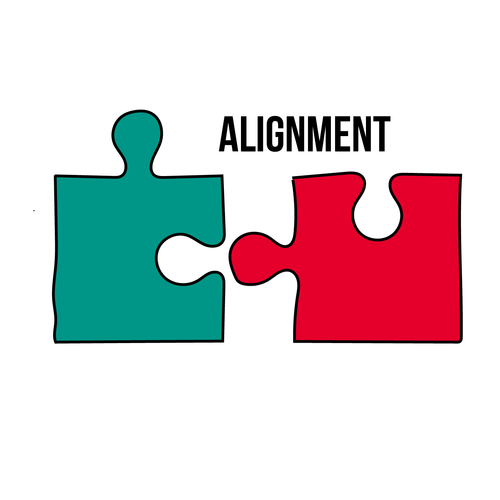

- Instruction: In a group or think pair share format, have participants discuss the following questions. Acknowledge those who have progressed toward their goal(s) and encourage anyone who wants to change or modify their goal to get 1:1 support.
- Share: Let’s discuss our SMART Goals.
- How is it going with your current SMART goal?
- What are some ways you can improve progress toward your goal? (Grows)
- What are some ways you are doing well with progress towards your goal? (Glows)
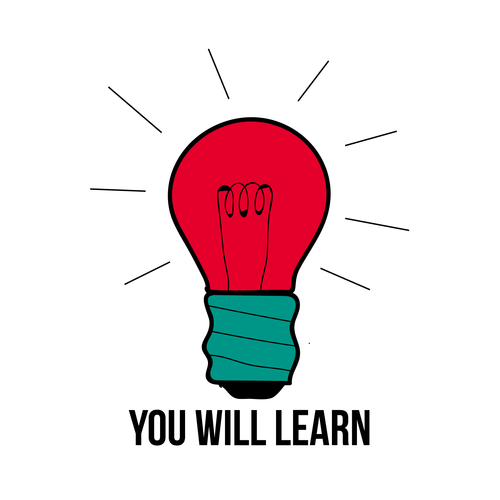
- How substance abuse/addiction affects the body and what are the risk and protective factors associated with substance abuse/addiction.
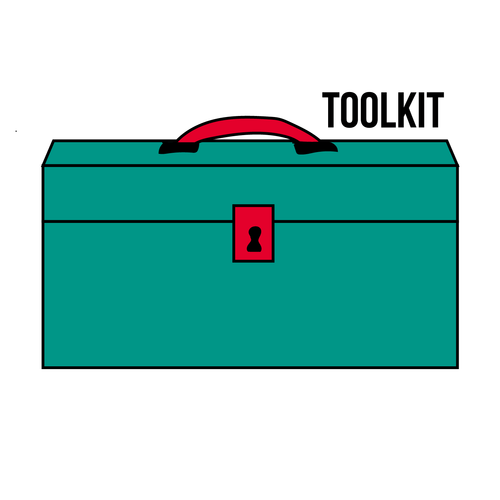
- Worksheets
- Slide presentation
- Conversation Prompts Handout
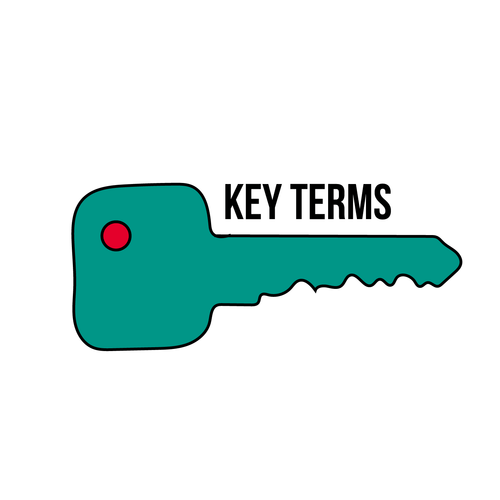
[As defined by CDC, 2017; WHO, n.d.; NIDA, 2007; NIDA, 2016; NIDA, 2017; SAMHSA, 2015; Merriam-Webster Learner’s Dictionary, n.d.; Harvard University’s Center on the Developing Child, n.d.]
- Substance Abuse: The harmful use of substances, such as alcohol and illegal drugs.
- Addiction: A chronic disease characterized by drug seeking and use that is difficult to control despite harmful consequences.
- Overdose: Injury to the body (poisoning) that happens when a drug is taken in excessive amounts. An overdose can be fatal or nonfatal.
- Opioids: Substances that work on the nervous system in the body or specific receptors in the brain to reduce the intensity of pain.
- Tolerance: A condition when a person no longer responds to a drug in the way they did at first, so it takes a higher dose of the drug to achieve the same effect as when the person first used it.
- Dependence: A condition when a person functions normally only when they are using drugs. If they suddenly stop using a drug, their body goes through withdrawal symptoms.
- Withdrawal Symptoms: A group of physical and mental symptoms that can range from mild to life-threatening that may occur when a person suddenly stops using drugs.
- Relapse: The return to drug use after the person has stopped using drugs for a period of time.
- Risk Factor: Characteristic at the biological, psychological, family, community, or cultural level that is associated with a higher likelihood of negative outcomes.
- Protective Factor: Characteristic associated with a lower likelihood of negative outcomes or that reduce a risk factor’s impact.
- Resilience: The ability to overcome serious hardship.
- Cope: To deal effectively with something difficult and to try and come up with solutions.
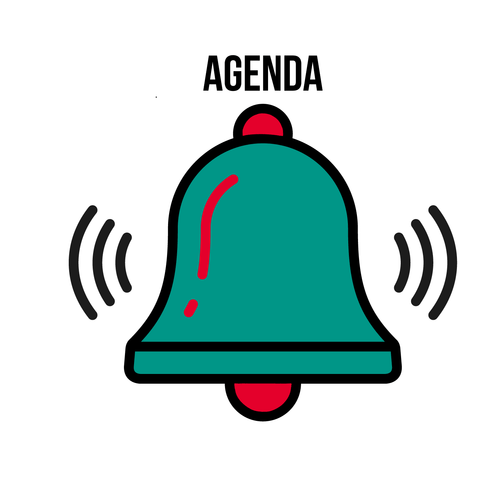
- Do Now
- Addiction and its Effect on the Brain
- Risk Factors vs. Protective Factors
- Let’s Talk About Drugs
- Exit Ticket
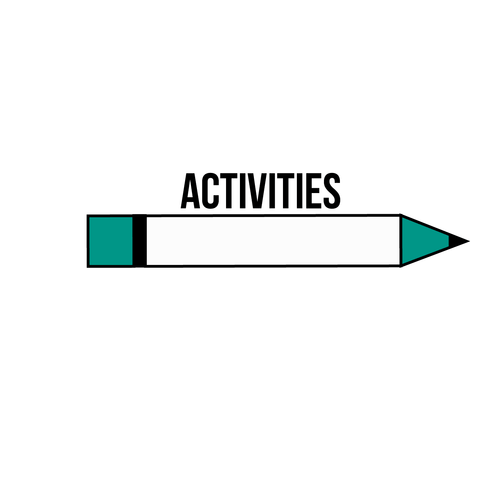
Do Now: Demystifying Addiction
- Instruction:
- For each question, read the question and possible answers out loud to the group.
- Give participants 1-2 minutes to think over the question before having them vote on which they think is the correct answer. Then, share the answer with the group.
- Optional: If you use a polling clicker system in your class, you can also use that to conduct this activity.
| Questions | Answers |
|
T/F: Addiction is not a disease.
|
B is the correct answer. There is a popular misconception that substance abuse can be a controlled action, but that is far from the truth. What you may not know is that addiction is a disease, like heart disease. It is not a personality trait. |
|
T/F: More than three out of five drug overdose deaths involve an opioid.
|
A is the correct answer. Overdose deaths from opioids, including prescription drugs, substances such as alcohol and illegal drugs have increased more than five times. Overdoses involving opioids killed more than 42,000 people in 2016. |
|
T/F: Not everyone is equally at risk of addiction.
|
A is the correct answer. Not everyone is equally prone to addiction. Different people have different reactions to the substance. Your genetics, environmental factors, brain chemistry, and the age at which you start using can influence your potential drug/alcohol dependency. |
|
T/F: Treatment for addiction is useless.
|
B is the correct answer. Like other chronic diseases, addiction can be managed successfully. Treatment can help people to fight addiction’s powerful negative effects on the brain and behavior so that they can regain control of their lives. |
|
T/F: Being addicted is a choice.
|
B is the correct answer. Although the initial decision to take drugs is voluntary for most people, repeated drug use can lead to persistent brain changes that make it hard for them to resist intense urges to take drugs. |
Sources:
- National Institute on Drug Abuse. (2012). How effective is drug addiction treatment? Retrieved From: https://www.drugabuse.gov/publications/principles-drug-addiction-treatment-research-based-guide-third-edition/frequently-asked-questions/how-effective-drug-addiction-treatment
- National Institute on Drug Abuse. (2015). Understanding drug use and addiction. Retrieved From: https://www.drugabuse.gov/publications/drugfacts/understanding-drug-use-addiction
Good to Know: Addiction and its Effect on the Brain
- Share:
- Today, we are going to talk about substance abuse, opioids, and Substance abuse refers to the harmful use of substances, such as alcohol and illegal drugs (WHO, n.d.).
- Opioids are substances that work on the nervous system in the body or specific receptors in the brain to reduce the intensity of pain (CDC, 2017).
- An addiction is a chronic disease characterized by drug or alcohol seeking and use that is difficult to control despite harmful consequences (NIDA, 2016).
- Substance abuse and addiction are very serious and affect the lives of many Americans today.
- In fact, it was estimated that in 2015, roughly 20.8 million Americans aged 12 or older suffered from substance abuse (15.7 million people had an alcohol use disorder and 7.7 million had a drug use disorder) (SAMHSA, 2016).
- To give you an idea of how large that number is, the number of people suffering from substance abuse is greater than the population of Florida (around 20.6 million in 2016) (U.S. Census Bureau, n.d.).
- Optional: Compare the statistic to another geographical location that is more relevant to your audience.
- Unfortunately, in 2015, only about 8% of people who need treatment for substance abuse actually get it (SAMHSA, 2016).
- The reason why that percentage is so low is that of both negative (and often false) myths about substance abuse and barriers such as finances (Pugh, 2015). That’s why it’s especially important that we debunk some of these myths today and talk about this topic!
- Share:
- Substances also referred to as drugs that people may get addicted to often function by stimulating regions of your brain that cause you to “feel-good.”
- However, this “high” is temporary, and your body gets used to this “feel-good” sensation; in other words: you build a tolerance (NIDA, 2016).
- Tolerance is the condition when a person no longer responds to a drug in the way he or she did at first, so he or she takes a higher dose of the drug to achieve the same effect as when the person first used it (NIDA, 2017). As a result, greater amounts of drugs are typically needed to create this same sensation of pleasure.
- Eventually, the body needs to use drugs to even feel normal, and without drugs, he or she may feel ill and nauseous.
- Once the body relies on a substance, it can be incredibly difficult to stop using.
- Dependence is the condition when a person functions normally only when they are using drugs. If they suddenly stop using a drug, their body goes through withdrawal symptoms (NIDA, 2007).
- Withdrawal symptoms are physical and mental symptoms that can range from mild to life-threatening that may occur when a person suddenly stops using drugs. These symptoms can vary depending upon the substance of abuse and the time spent using that substance (NIDA, 2017).
- Share:
- It is not uncommon for people who have stopped using drugs for a while to relapse, or return to drug use (NIDA, n.d.).
- Relapse is the return to drug use after the person has stopped using drugs for a period of time (NIDA, n.d.).
- Although it is common for a person to relapse, relapse doesn't mean that treatment doesn’t work.
- Addiction is a treatable disease, and the journey to recovery is very personal.
- It can help if they have plenty of support. There is absolutely no shame in asking for help during the recovery process.
- Instruction:
- With the entire group, brainstorm local resources they can consider reaching out to if they/someone they know won't help or would like to discuss substance abuse/addiction. Responses may include:
- Doctors
- Therapists/counselors
- Parents/guardians
- Trusted adults
- Introduce resources they can consider checking out if they want to learn more about substance abuse/addiction:
- SAMHSA: https://www.samhsa.gov/
- NIDA: https://www.drugabuse.gov/
- iRecover: irecover.me/
- Partnership for Drug-Free Kids: https://drugfree.org/
Real World Relevance: Risk Factors vs. Protective Factors
- Share:
- As we talked about earlier, not everyone is equally as likely to abuse substances or become addicted.
- Risk factors and protective factors can influence your likelihood of substance abuse/addiction.
- Risk factors are characteristics of the biological, psychological, family, community, or cultural level that are associated with a higher likelihood of negative outcomes (SAMHSA, 2015).
- Protective factors are characteristics associated with a lower likelihood of negative outcomes or that reduce a risk factor’s impact (SAMHSA, 2015).
- What do you think are some risk factors for substance abuse? What are some protective factors?
- Instruction:
- As participants share answers to the following questions, record answers on a projector, board or flipchart paper.
| Risk Factors | Protective Factors |
| Genetics | Genetics |
| Family members who abuse drugs/alcohol, and distant/unsupportive family members | Supportive, involved family/friends who are not involved with drugs/alcohol |
| Negative self-esteem | Positive self-esteem |
| Trauma (physical abuse, bullying, etc.) | Coping skills/resilience |
| Becoming involved in substance use at an early age | Anti-drug education/policies |
| Social pressure (media, friends who encourage use) | Strong bonds with communities, institutions, etc. |
| Problems at work or school | Physical and psychological safety |
Sources:
- O’Connell, M. E., Boat, T., & Warner, K. E. (2009). Preventing mental, emotional, and behavioral disorders among young people: Progress and possibilities. Washington, DC: The National Academies Press and U.S. Department of Health and Human Services, Substance Abuse and Mental Health Administration. Retrieved From: dhss.alaska.gov/dbh/Documents/Prevention/programs/spfsig/pdfs/IOM_Matrix_8%205x11_FINAL.pdf
- gov. (n.d.) Risk & protective factors. Retrieved From: https://youth.gov/youth-topics/subst...and-dependence
- Share:
- A single factor cannot predict whether someone is more likely to become addicted or abuse substances.
- Instead, it depends on a combination of factors.
- What are some things you can do to try and decrease the impact of possible risk factors on you?
- One protective factor is resilience, which is the ability to overcome serious hardship (Harvard University’s Center on the Developing Child, n.d.).
- Developing coping strategies can be helpful in building resilience. To cope means to deal effectively with something difficult and to try and come up with solutions (Merriam-Webster Learner’s Dictionary, n.d.). Does anyone remember any coping strategies?
- Responses may include:
- Talk to others; ask for help
- Exercise
- Deep breathing
- Eat healthily
- Get enough sleep
- Positive self-talk (CDC, 2015)
Hands-On: Let’s Talk about Drugs
- Share:
- Did you know that talking about substance abuse is a great first step to get help or help someone struggling with substance abuse and can serve as a protective factor?
- Studies have shown that parents have a significant influence on their children’s decisions to experiment with substances (CASA, 2012).
- In fact, it’s so important that National Night of Conversation (supported by Dr. Oz) was created to encourage such discussion (Coderre, 2016). That’s why we are going to try having conversations about substance abuse with each other right now.
- Instruction:
- Give each participant a Conversation Prompt Handout.
- Participants will partner up with a different conversation partner for each prompt. Encourage them to get up, move around, and mingle!
- Allow 4 minutes (2 minutes each) for partners to discuss a prompt.
- At the end of 4 minutes, signal to the group to switch partners (bell, whistle, etc.).
- What do I know about alcohol and drugs from school, TV, or online?
- How does it make me feel when I hear about alcohol and drugs?
- In what situations am I most likely to encounter alcohol and drugs? What would I say or do if I am offered alcohol or drugs?
- How can my parents/guardians/peers create an environment that supports you in making healthy decisions? Should we have some rules about drugs and alcohol?
- Share:
- If you’re interested in learning more about the National Night of Conversation, please visit The Dr. Oz Show’s website: www.doctoroz.com/feature/facing-addiction-over-dinner. I encourage you to also try starting conversations about substance abuse/addictions at home and/or with a trusted adult if you feel comfortable!
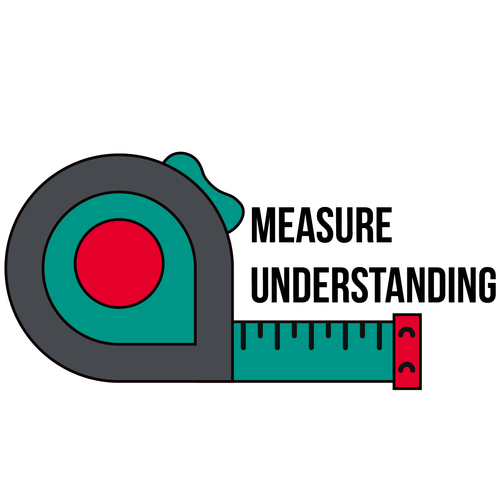
Exit Ticket:
- Instruction:
- Have participants write on their worksheet or share out loud the following question(s).
- If you wanted to talk about addiction/substance abuse, who would you go to?
- If you wanted to talk to a trusted adult(s) about addiction/substance abuse, how would you start the conversation?
Bibliography
- Center for Disease Control and Prevention. (2015). Coping with stress. Retrieved From: www.cdc.gov/violenceprevention/pub/coping_with_stress_tips.html
- Center for Disease Con and Prevention. (2017). Overview of an epidemic. Retrieved From: https://www.cdc.gov/drugoverdose/data/index.html
- National Center on Addiction and Substance Abuse. (2012) Importance of family dinners. Retrieved From: https://www.centeronaddiction.org/ad...y-dinners-2012
- Coderre, T. (2016). Having a conversation about drugs and alcohol. Retrieved From: blog.samhsa.gov/2016/11/15/having-a-conversation-about-drugs-and-alcohol/#.WfOSahNSzBI
- The Dr. Oz Show. (n.d.). Facing addiction over dinner. Retrieved From: http://s.doctoroz.com/FAOD_NOC.pdf
- Harvard University’s Center on the Developing Child. (n.d.). Resilience. Retrieved From: https://developingchild.harvard.edu/science/key-concepts/resilience/
- Merriam-Webster Learner’s Dictionary. (n.d.). Cope. Retrieved From: http://learnersdictionary.com/definition/cope
- National Institute on Drug Abuse. (2007). Definition of dependence. Retrieved From: www.drugabuse.gov/publications/teaching-packets/neurobiology-drug-addiction/section-iii-action-heroin-morphine/8-definition-dependence
- National Institute on Drug Abuse. (2007). What is a relapse? Retrieved From: https://easyread.drugabuse.gov/content/what-relapse
- National Institute on Drug Abuse. (2012). How effective is drug addiction treatment? Retrieved From: https://www.drugabuse.gov/publications/principles-drug-addiction-treatment-research-based-guide-third-edition/frequently-asked-questions/how-effective-drug-addiction-treatment
- National Institute on Drug Abuse. (2015). Tolerance, dependence, addiction: What's the difference?. Retrieved From: https://teens.drugabuse.gov/blog/pos...ats-difference
- National Institute on Drug Abuse. (2017). Understanding drug use and addiction. Retrieved From: https://www.drugabuse.gov/publications/drugfacts/understanding-drug-use-addiction
- O’Connell, M. E., Boat, T., & Warner, K. E. (2009). Preventing mental, emotional, and behavioral disorders among young people: Progress and possibilities. Washington, DC: The National Academies Press and U.S. Department of Health and Human Services, Substance Abuse and Mental Health Administration. Retrieved From: dhss.alaska.gov/dbh/Documents/Prevention/programs/spfsig/pdfs/IOM_Matrix_8%205x11_FINAL.pdf
- Substance Abuse and Mental Health Services Administration. (2015). Risk and protective factors. Retrieved From: www.samhsa.gov/capt/practicing-effective-prevention/prevention-behavioral-health/risk-protective-factors
- Substance Abuse and Mental Health Services Administration. (2016). Key substance use and mental health indicators in the United States: Results from the 2015 National Survey on Drug Use and Health. Retrieved From: https://www.samhsa.gov/data/sites/default/files/NSDUH-FFR1-2015/NSDUH-FFR1-2015/NSDUH-FFR1-2015.pdf
- Pugh, B. (2015). 4 Common barriers to addiction treatment. Retrieved From: https://www.centeronaddiction.org/th...tion-treatment
- World Health Organization. (n.d.). Substance abuse. Retrieved From: http://www.who.int/topics/substance_abuse/en/
- S. Census Bureau. (n.d.). Florida. Retrieved From: https://www.census.gov/quickfacts/FL
- gov. (n.d.). Risk & protective factors. Retrieved From: https://youth.gov/youth-topics/subst...and-dependence
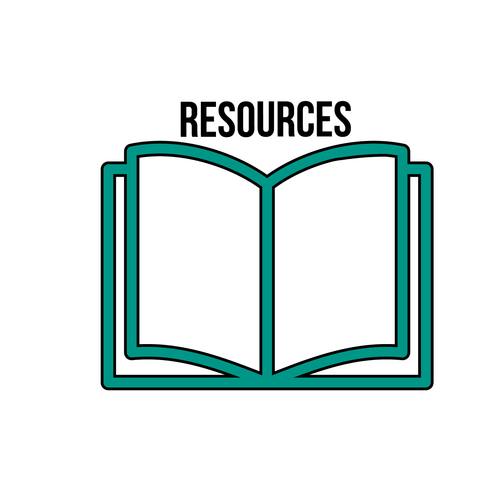
- Optional Real World Relevance Activity:
- Share:
- As I mentioned earlier, substance abuse and addiction affect the lives of many.
- Even if you yourself may not struggle with it, you may know someone who does.
- Now, we will be watching a video showing a scenario that teenagers and adults may find themselves in.
- We will be discussing the video after, so look out for Dylan and Kyle’s behaviors.
- Instruction:
- Play this iRecover video: [LINK TO VIDEO HERE].
- Share:
- As mentioned earlier, for most people, the initial choice to take drugs is theirs. What could Dylan have done differently in this scenario?
- What are some ways he can try to turn down Kyle?
- What are some ways he can try to avoid the situation entirely?
- What risk factors were present in this scenario?
- What should Dylan now?
- Share:
- One thing Dylan could do is talk to a trusted adult (such as a parent, guardian, or doctor).
- Partnership For Drug-Free Kids. (2013). Talk with your kids. Retrieved From: https://drugfree.org/article/talk-with-your-kids/
- National Geographic. (2017). The science of addiction: Here’s your brain on drugs. Retrieved From: https://www.youtube.com/watch?v=JVQy-LUE9Ss
- National Institute on Drug Abuse. (n.d.). Infographics. Retrieved From: https://www.drugabuse.gov/related-to...s/infographics
- Share:
This lesson was created in partnership with Albert Einstein College of Medicine Department of Epidemiology and Population Health with funding support by the National Institutes of Health NIDDK Grant R01DK097096.

